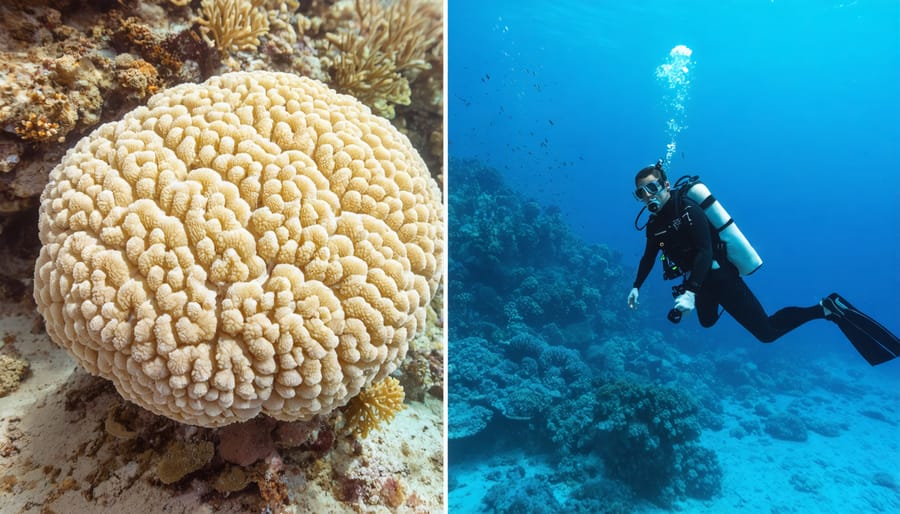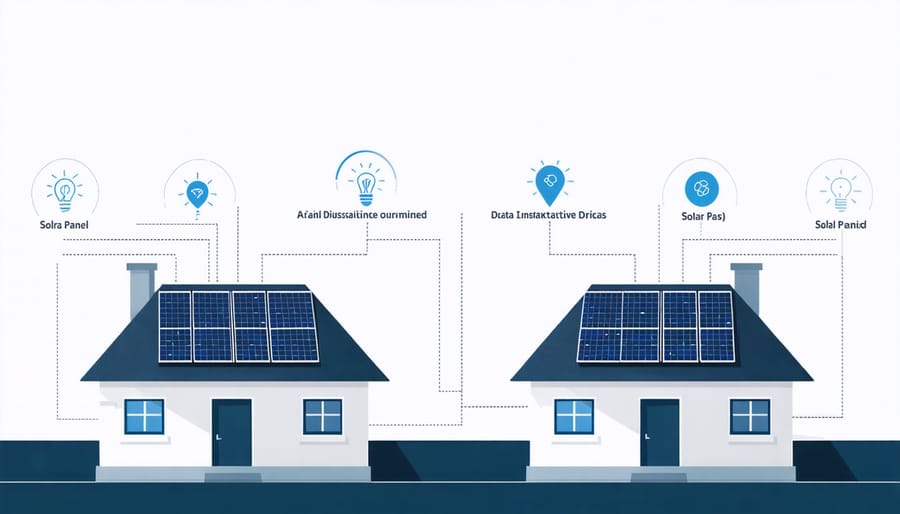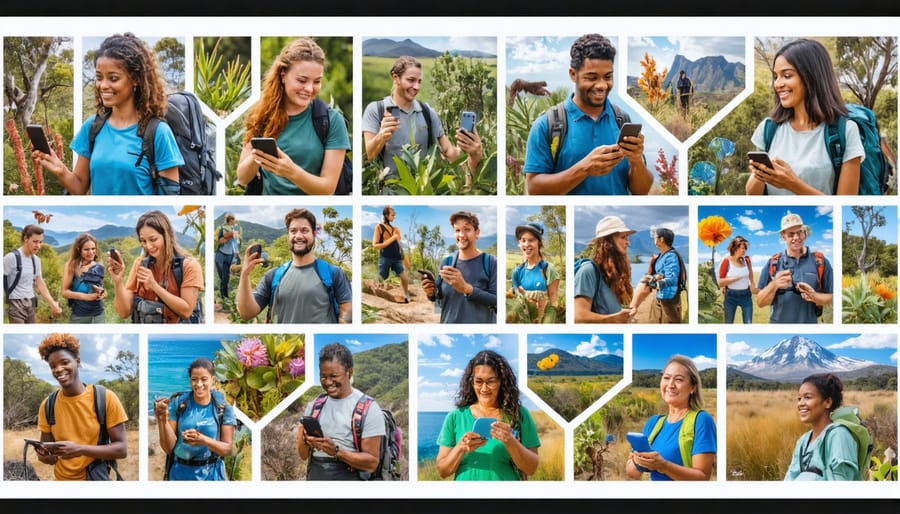Citizen science transforms everyday Australians into vital environmental researchers, bridging the gap between scientific discovery and community action. Through innovative sustainability education programs, participants contribute meaningful data while gaining hands-on experience in conservation. From tracking endangered species through the Wildlife Spotter initiative to monitoring coral health in the Great Barrier Reef’s Virtual Reef Diver project, these collaborative efforts amplify scientific research capabilities while fostering environmental stewardship.
The impact is profound: thousands of citizen scientists across Australia now collect millions of data points annually, accelerating research that would take traditional scientists decades to compile. Whether identifying native plants through the Australian Plant Image Index or recording weather patterns for the Climate Watch program, these initiatives demonstrate how public participation drives environmental understanding and protection. As climate challenges intensify, citizen science projects offer a powerful tool for engaging communities in evidence-based conservation while building a more sustainable future for all Australians.
How Citizen Science Powers Environmental Change

Why Your Participation Matters
Every observation you record, photo you submit, or data point you collect contributes to a larger scientific understanding of our environment. Your participation helps researchers gather information across vast geographical areas that would be impossible to cover alone. When thousands of citizen scientists report bird sightings or document plant flowering times, we create a comprehensive picture of how climate change affects wildlife and ecosystems across Australia.
Your local knowledge is invaluable – you might notice changes in your backyard or local bush that scientists wouldn’t otherwise discover. Whether you’re tracking koala populations in Queensland or monitoring water quality in the Murray-Darling Basin, your consistent observations help establish long-term data trends that inform conservation decisions.
Beyond the data, your involvement helps bridge the gap between scientific research and community action. As you learn about environmental challenges firsthand, you become an advocate for evidence-based solutions in your community. This ripple effect of knowledge and engagement is crucial for building environmental awareness and driving positive change across the country.
Remember, some of Australia’s most significant environmental discoveries have come from everyday people paying attention to their surroundings. Your participation matters more than you might think.
Building Environmental Awareness Through Action
Citizen science projects have proven to be powerful catalysts for community engagement in sustainability, creating lasting impact through hands-on learning experiences. When participants actively collect data about local wildlife, measure water quality, or track changes in native vegetation, they develop a deeper understanding of environmental challenges and solutions.
These projects transform abstract environmental concepts into tangible experiences, making scientific research accessible to everyone from schoolchildren to retirees. The Beach Clean-up Science initiative, for example, has enabled thousands of Aussies to contribute meaningful data while taking direct action to protect marine ecosystems.
The educational benefits extend beyond individual learning. Participants often become environmental advocates within their communities, sharing knowledge and inspiring others to get involved. This ripple effect strengthens local environmental stewardship and builds lasting connections between scientific research and community action.
By combining practical conservation work with data collection, these projects create powerful learning experiences that stick with participants long after their initial involvement, fostering a new generation of environmentally aware citizens.
Popular Australian Citizen Science Projects
ClimateWatch: Track Environmental Changes
ClimateWatch empowers everyday Australians to become environmental scientists in their own backyards. By recording seasonal changes in plants and wildlife, participants contribute valuable data that helps researchers track the impacts of climate change across the continent. Using simple environmental monitoring technologies, citizens can document everything from flowering times to bird migrations through a user-friendly mobile app.
Getting started is straightforward: simply download the ClimateWatch app, create an account, and begin recording observations during your daily activities. Whether you’re walking through your local park or hiking in the bush, every observation matters. The project focuses on indicator species – plants and animals that are particularly sensitive to climate change – making it easier for participants to know what to look for.
The real magic happens when thousands of observations come together, creating a comprehensive picture of environmental changes across Australia. Schools have embraced the program, incorporating it into science curricula, while community groups organize regular “ClimateWatch walks” to collect data collectively.
Success stories include identifying shifting breeding patterns in native birds and tracking changes in plant flowering seasons, providing crucial evidence of climate change impacts at the local level. This citizen-led monitoring network has become an invaluable resource for scientists and policymakers working to understand and address environmental challenges.
FrogID: Protecting Amphibian Biodiversity
Australia’s unique amphibian species face mounting challenges from climate change, habitat loss, and disease. The FrogID project, led by the Australian Museum, empowers everyday citizens to contribute to vital amphibian research through their smartphones. By recording and submitting frog calls using the FrogID app, participants help scientists track frog populations, identify breeding habitats, and monitor species distribution across the continent.
The project has revolutionised amphibian research by creating Australia’s first national frog call database. Each recording captures not only the distinctive calls but also precise location data and environmental conditions, providing researchers with comprehensive insights into frog behaviour and habitat preferences.
Since its launch, FrogID has collected over 500,000 frog recordings from more than 240 species, including several threatened species. These valuable data points help scientists understand how frogs respond to environmental changes and urban development, enabling better-informed conservation strategies.
Participating is straightforward: users simply download the app, venture outdoors during prime frog calling times (usually after rain or at night), and record the calls they hear. The project’s expert team verifies each submission, ensuring data accuracy while helping participants learn to identify different frog species.
This citizen science initiative has become particularly crucial in detecting early warning signs of ecosystem stress, as frogs are sensitive environmental indicators. Through FrogID, everyday Australians are playing a vital role in protecting these remarkable amphibians for future generations.
Great Barrier Reef Monitoring
The Great Barrier Reef’s citizen science monitoring programs have become a cornerstone of coral conservation efforts in Australia. CoralWatch, launched by the University of Queensland, stands out as a leading initiative that enables everyday people to contribute meaningfully to reef research and protection. Participants use a simple coral health chart to collect data about coral coloration, which serves as a vital indicator of coral bleaching and overall reef health.
Volunteers, ranging from casual snorkelers to dedicated divers, regularly monitor specific reef sites and upload their observations through user-friendly mobile apps. This collected data helps scientists track changes in coral health across vast stretches of the reef system, providing early warning signs of potential bleaching events and other environmental stresses.
The Eye on the Reef program, managed by the Great Barrier Reef Marine Park Authority, offers another avenue for citizen scientists. Through this initiative, tourism operators, recreational boats, and community members report real-time reef conditions, unusual wildlife sightings, and potential threats to reef ecosystems.
These monitoring efforts have proven invaluable during mass bleaching events, with citizen scientists helping researchers track the extent and severity of coral damage. The data collected has directly influenced reef management strategies and conservation policies, demonstrating how community involvement can make a tangible difference in protecting one of Australia’s most precious natural wonders.

Agricultural Citizen Science Initiatives
Soil Health Monitoring Network
Across Australia, dedicated citizen scientists are getting their hands dirty – quite literally – through collaborative soil monitoring initiatives that provide crucial data about our land’s health. The Soil Health Monitoring Network connects everyday Australians with scientists to assess and track soil quality in both urban and rural areas.
Participants receive testing kits and training to collect soil samples from their local areas, measuring key indicators like organic matter content, pH levels, and beneficial microorganism activity. These citizen scientists use simple but effective tools to conduct basic soil analyses, then submit their findings through a user-friendly mobile app that feeds into a national database.
The project has already yielded impressive results, with over 5,000 soil samples analyzed across different regions. This wealth of data helps researchers identify trends in soil degradation, track the effectiveness of regenerative farming practices, and develop targeted solutions for improving soil quality.
Local schools have embraced the initiative, incorporating soil testing into their science curriculum. Students learn hands-on about soil ecology while contributing meaningful data to environmental research. Several Indigenous communities also participate, combining traditional land management knowledge with modern scientific monitoring methods.
The network demonstrates how citizen science can bridge the gap between scientific research and community action, creating a more comprehensive understanding of our soil’s health while fostering environmental stewardship at the grassroots level.
Native Plant Observers
Native plant observers across Australia are making significant contributions to our understanding of indigenous flora through various citizen science initiatives. The Bush Blitz program stands out as a remarkable example, where everyday Australians work alongside botanists to document native plant species in their local areas. Using smartphone apps and simple identification guides, volunteers photograph and record plant locations, flowering times, and growth patterns.
These community-driven projects have led to exciting discoveries, including identifying previously unknown plant populations and tracking changes in flowering seasons due to climate variations. In Tasmania, citizen scientists recently documented new locations of the rare native orchid species, while Western Australian volunteers helped map the distribution of threatened Banksia woodlands.
The Australian Plant Society’s collaborative database has become a valuable resource for conservation efforts, with citizen scientists contributing over 100,000 observations annually. This information helps researchers understand how native plants respond to environmental changes and assists in developing better conservation strategies.
Getting involved is straightforward – participants can start by joining local native plant groups or downloading user-friendly apps like iNaturalist Australia. Many observers begin in their own backyards or local bushland areas, contributing valuable data while learning about Australia’s unique flora. These projects not only advance scientific knowledge but also help create stronger connections between communities and their natural environment.
Energy-Focused Community Projects
Solar Potential Mapping
In cities and towns across Australia, citizen scientists are revolutionising the way we map solar energy potential through community-driven initiatives. Armed with simple light meters and smartphone apps, volunteers collect data about solar radiation levels, shading patterns, and roof orientations in their neighbourhoods. This valuable information helps create detailed solar potential maps that benefit both homeowners and urban planners.
The Sydney Solar Mapping Project stands out as a brilliant example, where over 500 residents have contributed to mapping more than 10,000 rooftops. Participants use standardised measurement tools to record sun exposure data throughout the day, while also noting obstacles like tree coverage and surrounding buildings. This collective effort has helped identify optimal locations for solar panel installations and assisted local councils in developing targeted renewable energy strategies.
What makes these projects particularly effective is their educational component. Volunteers learn about solar energy principles while contributing to real-world solutions. The data collected has already influenced several community solar initiatives and helped households make informed decisions about solar installations, demonstrating how citizen science can directly impact sustainable energy adoption.

Household Energy Monitoring
Australians are taking charge of their energy future through innovative household monitoring programs that combine citizen science with sustainable living. The Power Trackers initiative, launched in Brisbane, enables residents to record and share their daily energy consumption patterns using smart meters and a user-friendly mobile app. Participants contribute valuable data while learning to optimize their energy usage and reduce their carbon footprint.
In Melbourne, the Energy Champions network has grown to over 5,000 households, each monitoring and reporting their energy patterns across different seasons. This collaborative effort has helped identify peak usage times and develop community-based solutions for energy efficiency. The project’s success lies in its simple approach: participants log their daily consumption, compare notes with neighbours, and implement shared strategies for reduction.
These citizen-led programs have proven particularly effective in regional communities, where data helps utilities better understand consumption patterns and plan renewable energy infrastructure. The collected information has already influenced local energy policies and encouraged the adoption of solar panels in participating neighbourhoods, demonstrating how everyday Australians can contribute to energy research while creating more sustainable communities.
Citizen science projects represent a powerful intersection of community engagement and scientific research, creating lasting positive impacts on our environment and society. Through these initiatives, everyday Australians have contributed valuable data that helps track climate change, protect endangered species, and preserve our unique ecosystems. The success stories we’ve explored demonstrate how collective effort can lead to meaningful scientific discoveries and environmental conservation outcomes.
By participating in citizen science projects, you not only contribute to important research but also gain hands-on experience in scientific methods, develop new skills, and connect with like-minded individuals in your community. These projects break down barriers between professional scientists and the public, making science more accessible and democratic while fostering environmental awareness and stewardship.
Whether you’re a student, retiree, or busy professional, there’s a citizen science project that matches your interests and availability. The flexibility of these programs means you can contribute as much time as you’re able, whether that’s spending a few minutes recording wildlife sightings in your backyard or dedicating weekends to collecting water quality data.
We encourage you to take the first step and get involved in one of the many citizen science projects available across Australia. Your contribution, no matter how small, can make a significant difference in understanding and protecting our environment for future generations. Together, we can create a more sustainable and scientifically informed society.

